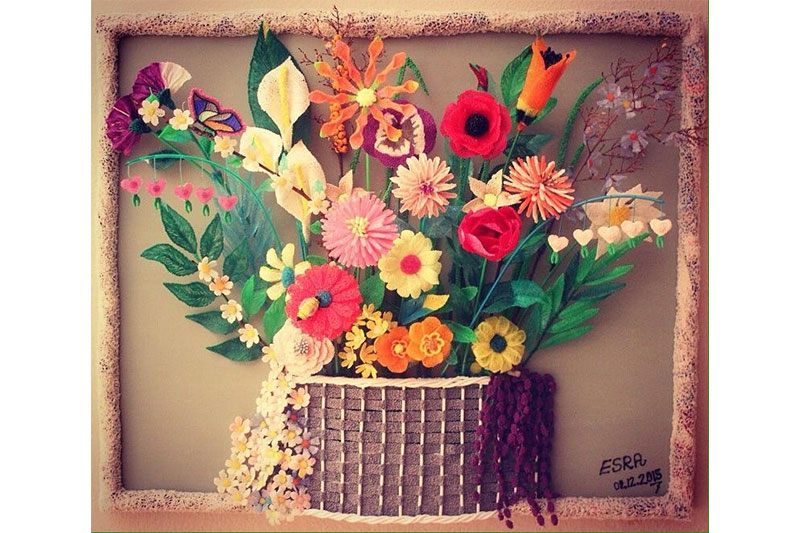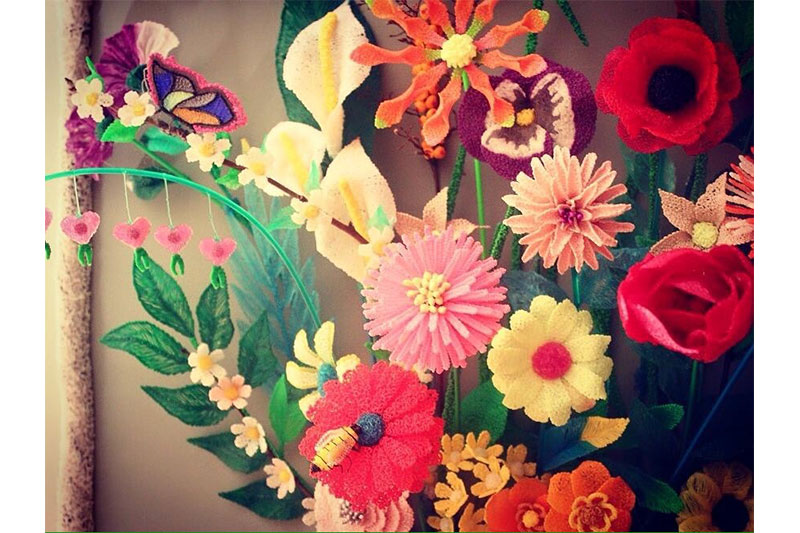As a hand-held 3D printer, the 3Doodler opens up a world of possibilities, uses, and applications. This week we look at how the 3Doodler hit the runway with high-fashion wearable forms.
Artist and creator Erica Gray’s Forms Organic demonstrates how free-hand constructions with the 3Doodler can lead to incredible and unique creative fashion.
Forms Organic was made using the 3Doodler and ABS plastic in combination with other materials to create a masked headpiece and torso section. The wearable sculpture is a bespoke one-of-a-kind artwork. The piece is inspired by organic figures and animalistic imagery, expressed using a skeletal structure, tails, teeth and claw-like elements.
“It took a few weeks to produce,” explains Erica. “I had a model booked and a deadline to work towards which helped me really focus.”
Creating a large-scale high-fashion piece was a new step for Erica. “While my work is essentially art based, Forms Organic is also a wearable piece, which meant it took a little longer getting the intricacies of the fit right for a moving subject,” she says.
Every aspect of Forms Organic was constructed by hand. “I pre-selected the elements I wanted to utlize within the piece,” Eric says, “such as the polymer teeth, claws and nylon tail – which I also sculpted from scratch.”
Once the additional pieces were created, Erica then got to work with her 3Doodler. “The main bulk of the piece is then 3Doodled around, through, or within those elements,” she says. “I used roughly sketched stencils for some of the joins, and once those parts were ready I just assembled the form, building up layers of filament over select areas to exaggerate and construct the skeletal ridges.”
"I usually work from sketches, however in this case I just let it evolve." Share
Erica was working only with a loose plan of where to go and how to proceed. “I usually work from sketches, however in this case I just let it evolve,” she explains. It was a process fitting for the nature of this piece and helped inspire the title of Forms Organic. “My sculpted works are often themed on organic forms and animalistic imagery, and this piece captures those fluid forms as well as some more rigid skeletal sections.”
Erica says the process helped inspire her for future works and opens up a new realm of possibilities for wearable, high-fashion projects. “I usually produce wearable pieces that stand as a whole, encompassing any accessories as a part of it’s whole,” she says. “Saying that, while I am not actively pursuing accessories as a direction it does have me intrigued. The idea would be to design individually stylised, fluid plastic pieces for arms, legs, shoes, collars – art as accessories.”![]()














